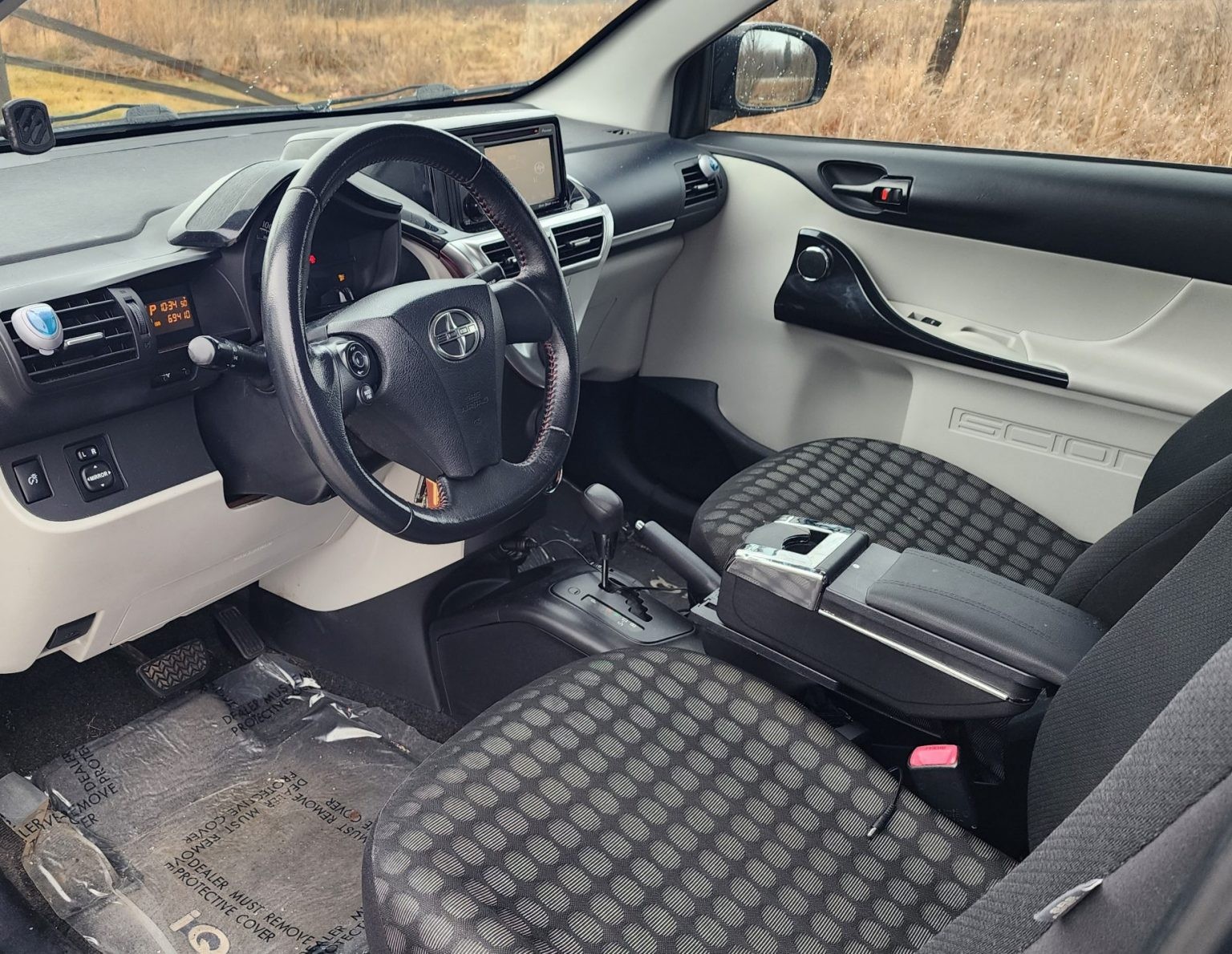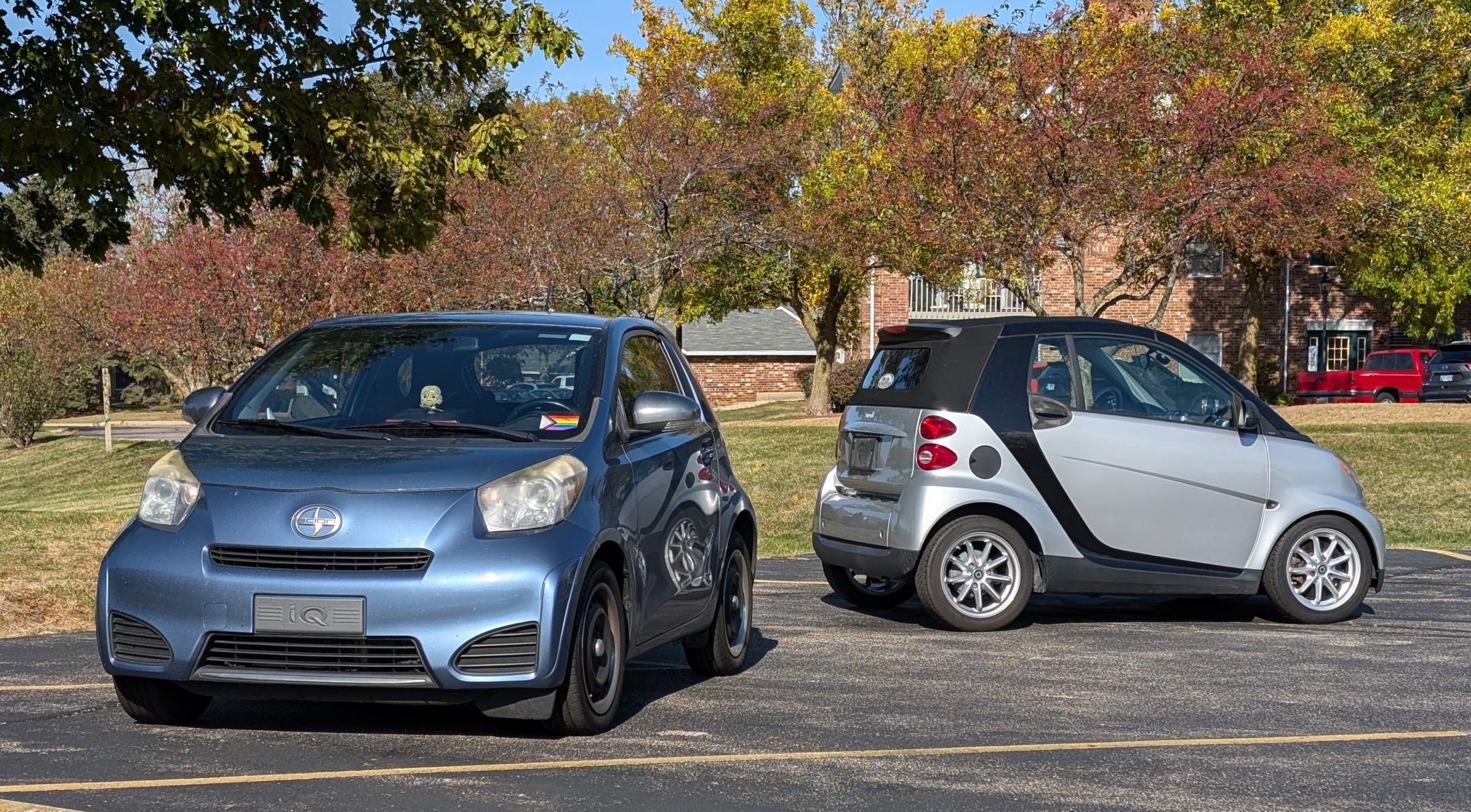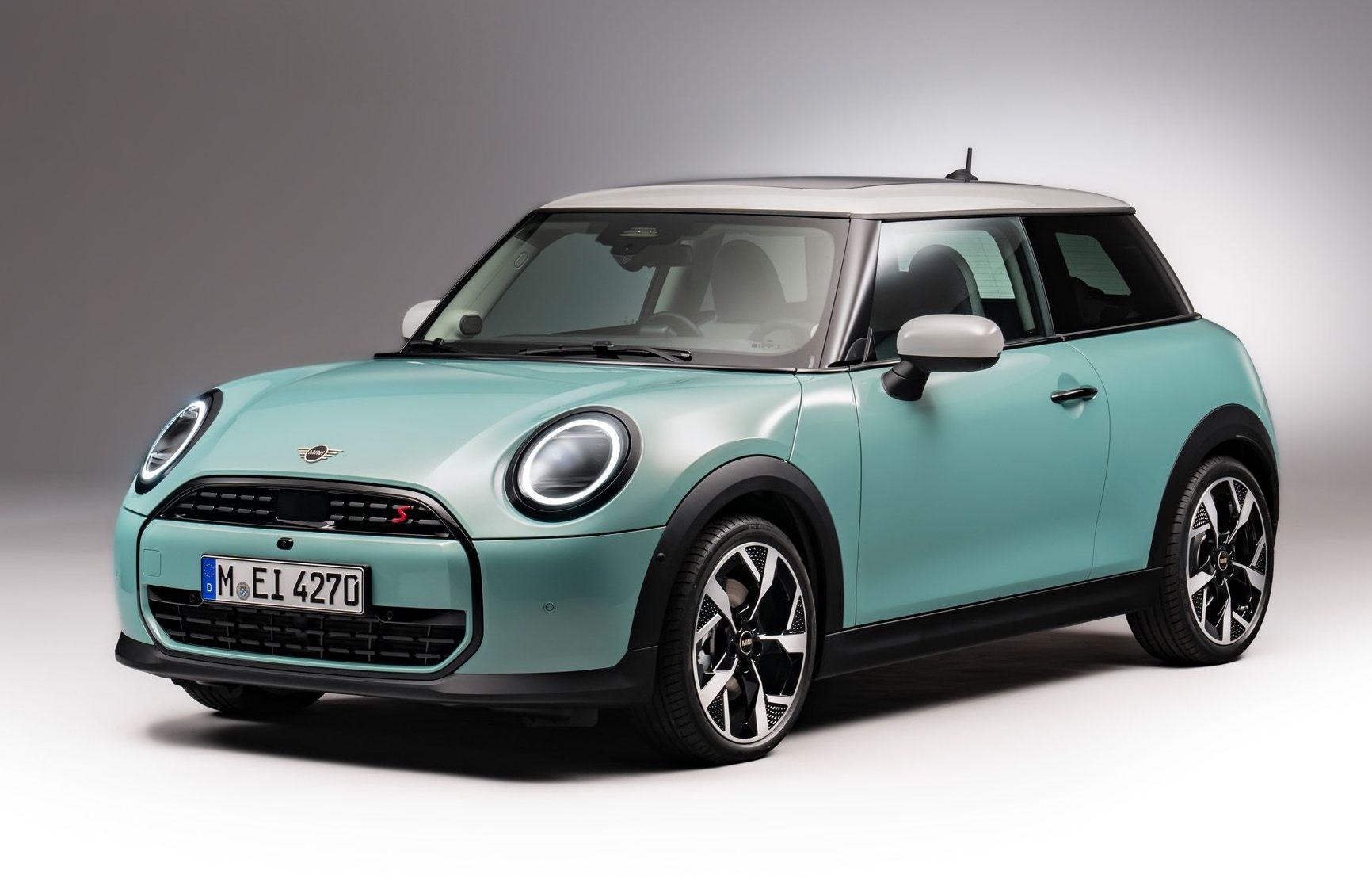The smallest car provides an attractive combination of ease of parking, fuel efficiency, and affordability, making it ideal for navigating busy city streets and minimizing your carbon footprint; CARS.EDU.VN dives deep into the world of compact vehicles, offering a detailed analysis of the most compact models available, their features, benefits, and why they might be the ideal choice for your urban lifestyle. Explore different small car models, their environmental impact, and the latest trends in efficient urban mobility.
1. Unveiling the Appeal of the Smallest Cars
The smallest cars offer several advantages, particularly in urban environments. Their compact size makes parking easier, reduces fuel consumption, and lowers emissions. As cities become more crowded and environmentally conscious, the demand for these vehicles is increasing.
1.1. Advantages of Driving a Small Car
- Parking Convenience: The most significant advantage is the ability to fit into tight parking spaces that larger vehicles cannot.
- Fuel Efficiency: Smaller cars typically have better fuel economy, saving money on gas and reducing your carbon footprint.
- Affordability: They often have a lower purchase price and reduced insurance costs compared to larger vehicles.
- Maneuverability: Easily navigate through congested city streets.
1.2. Environmental Benefits
- Reduced Emissions: Smaller engines produce fewer emissions, contributing to cleaner air in urban areas.
- Lower Resource Consumption: Less material is used in manufacturing these vehicles, reducing the environmental impact.
- Support for Sustainable Transportation: Encourages a shift towards more sustainable modes of transportation.
1.3. The Growing Demand for Small Cars
Urbanization, rising fuel costs, and increased environmental awareness drive the demand for smaller, more efficient vehicles. Automakers are responding by developing innovative models that combine compactness with advanced technology and safety features.
2. Defining the “Smallest Car”: Key Metrics
When determining the “smallest car,” several metrics are considered. Length, width, height, and turning radius are essential factors. These dimensions dictate how easily the vehicle can navigate tight spaces and park in crowded areas.
2.1. Critical Dimensions
- Length: Overall length determines how well a car fits into short parking spaces.
- Width: The width affects the car’s ability to navigate narrow streets and lanes.
- Height: The height can impact headroom and the vehicle’s overall profile.
- Turning Radius: A smaller turning radius allows for easier U-turns and maneuvering in confined spaces.
2.2. Comparing Different Models
To truly understand what constitutes the smallest car, compare the dimensions of various models. The Smart Fortwo and Scion iQ are often cited, but other vehicles, such as the Fiat 500 and Mini Cooper, also compete in this category.
| Model | Length (in) | Width (in) | Height (in) | Turning Radius (ft) |
|---|---|---|---|---|
| Smart Fortwo | 106.1 | 65.4 | 60.7 | 28.7 |
| Scion iQ | 120.1 | 66.1 | 59.1 | 13.4 |
| Fiat 500 | 144.4 | 64.1 | 59.8 | 30.6 |
| Mini Cooper | 151.1 | 68.3 | 55.7 | 36.1 |



2.3. The Importance of Turning Radius
Turning radius is crucial for city driving. A smaller turning radius allows drivers to make tighter turns and navigate congested areas more efficiently. The Scion iQ’s exceptionally small turning radius made it a standout in this category.
3. Top Contenders for the Title of “Smallest Car”
Several vehicles vie for the title of “smallest car,” each offering unique features and benefits. Here are some of the top contenders:
3.1. Smart Fortwo: The Iconic Microcar
The Smart Fortwo is perhaps the most recognizable microcar on the market. Known for its ultra-compact size and distinctive design, it is ideal for urban dwellers who need maximum parking flexibility.
-
Key Features:
- Two-seater configuration
- Rear-engine, rear-wheel-drive layout
- Compact dimensions for easy parking
- Fuel-efficient engine
-
Pros:
- Extremely easy to park
- Good fuel economy
- Unique and eye-catching design
-
Cons:
- Limited passenger and cargo space
- Can be unstable in high winds
- Automated manual transmission can be jerky
3.2. Scion iQ: The Tiny Four-Seater
The Scion iQ, marketed as the world’s smallest four-seater, offers a unique blend of compactness and practicality. Despite its small size, it provides seating for up to four passengers, making it a versatile option for urban travel.
-
Key Features:
- Four-seater configuration
- Innovative space-saving design
- Small turning radius for excellent maneuverability
- Fuel-efficient engine
-
Pros:
- Seating for four passengers
- Excellent maneuverability
- Good fuel economy
-
Cons:
- Limited cargo space
- Rear seats are cramped
- CVT transmission can be noisy
Image demonstrating the compact design of the Scion iQ, highlighting its four-seater capability and efficient use of space.
3.3. Fiat 500: The Retro-Chic Compact Car
The Fiat 500 combines retro styling with modern features in a compact package. While not as small as the Smart Fortwo or Scion iQ, it is still a diminutive car that offers a fun driving experience and distinctive Italian flair.
-
Key Features:
- Retro-inspired design
- Available in hatchback and convertible versions
- Fuel-efficient engine
- Available with manual or automatic transmission
-
Pros:
- Stylish and distinctive appearance
- Fun to drive
- Available with a convertible top
-
Cons:
- Limited rear seat space
- Small cargo area
- Can be expensive compared to other small cars
3.4. Mini Cooper: The Premium Compact Hatchback
The Mini Cooper is a premium compact hatchback known for its sporty handling and iconic design. While larger than some other cars on this list, it remains a popular choice for drivers who want a small car with a premium feel.
-
Key Features:
- Iconic British design
- Sporty handling
- Available in various trim levels and configurations
- Available with manual or automatic transmission
-
Pros:
- Fun to drive
- Premium features and materials
- Customizable with various options and accessories
-
Cons:
- More expensive than other small cars
- Limited rear seat and cargo space
- Can be less fuel-efficient than other models
4. The Smart Fortwo vs. The Scion iQ: A Detailed Comparison
The Smart Fortwo and Scion iQ represent two distinct approaches to the microcar concept. Comparing these models highlights their strengths and weaknesses.
4.1. Design and Dimensions
-
Smart Fortwo:
- Length: 8.8 feet
- Width: 5.1 feet
- Two-seater, rear-engine layout
- Unique and recognizable design
-
Scion iQ:
- Length: 10 feet
- Width: 5.5 feet
- Four-seater, front-engine layout
- More conventional hatchback design
4.2. Performance and Fuel Economy
-
Smart Fortwo:
- Engine: 999cc three-cylinder, 70 HP
- Transmission: Five-speed automated manual
- Fuel Economy: Up to 41 mpg (EPA)
-
Scion iQ:
- Engine: 1.3-liter four-cylinder, 94 HP
- Transmission: CVT
- Fuel Economy: Up to 37 mpg (EPA)
4.3. Interior and Features
-
Smart Fortwo:
- Upscale interior with fabric-covered dashboard
- Available heated leather seats
- Panoramic roof option
- Features like alarm systems, fog lights, and cruise control
-
Scion iQ:
- More basic interior with hard plastics
- Cloth seats
- No cruise control option
- Pioneer sound system
4.4. Reliability and Maintenance
-
Smart Fortwo:
- Known issues with roof delamination, engine problems, and transmission issues
- Plastic panels can become brittle over time
-
Scion iQ:
- Generally more reliable than the Smart Fortwo
- Potential issues include CVT whine and paint fade
- More prone to rusting
4.5. Driving Experience
-
Smart Fortwo:
- Feels like a glorified golf cart or go-kart
- Understeers at the first sign of trouble
- Less comfortable on rough roads
-
Scion iQ:
- Drives like a normal front-wheel-drive car
- More comfortable ride
- Sharper steering
4.6. The Verdict
The Smart Fortwo excels in ultra-compactness and unique design, while the Scion iQ offers more practicality with its four-seater configuration and more conventional driving experience. The choice depends on individual priorities and needs.
Image showcasing the Smart Fortwo, emphasizing its compact dimensions and suitability for urban parking.
5. Why Small Cars Failed in America: A Market Analysis
Despite their advantages, small cars have struggled to gain widespread acceptance in the American market. Several factors contribute to this phenomenon.
5.1. The American Preference for Larger Vehicles
Americans have traditionally favored larger vehicles, such as trucks, SUVs, and sedans. This preference is rooted in factors like perceived safety, comfort, and the ability to carry more passengers and cargo.
5.2. Fuel Prices and Economic Conditions
The popularity of small cars tends to fluctuate with fuel prices and economic conditions. During periods of high fuel prices and economic downturns, demand for small cars increases. However, when fuel prices are low and the economy is strong, consumers often opt for larger vehicles.
5.3. Marketing and Perception
The marketing and perception of small cars also play a role. If small cars are marketed as cheap and basic, consumers may view them as undesirable. However, if they are marketed as stylish, fun, and technologically advanced, they may be more appealing.
5.4. Competition from Other Vehicle Segments
Small cars face competition from other vehicle segments, such as subcompact SUVs and compact cars. These vehicles offer a similar level of fuel efficiency and affordability but provide more space and versatility.
5.5. The Case of the Smart Fortwo and Scion iQ
-
Smart Fortwo:
- Perceived as too small and impractical for many American drivers
- High price relative to its size and features
- Automated manual transmission was unpopular
-
Scion iQ:
- More expensive than a Toyota Yaris with similar features and more space
- Limited cargo space and cramped rear seats
- Not marketed effectively
5.6. Lessons Learned
The failure of the Smart Fortwo and Scion iQ in America provides valuable lessons for automakers. To succeed in the small car market, it is essential to offer vehicles that are affordable, practical, stylish, and fun to drive.
6. The Future of Small Cars: Trends and Innovations
Despite the challenges, small cars have a future in the automotive industry. Several trends and innovations are shaping the future of these vehicles.
6.1. Electrification
Electric powertrains are becoming increasingly common in small cars. Electric small cars offer zero emissions, low running costs, and a fun driving experience. The Fiat 500e is an example of a successful electric small car.
6.2. Autonomous Technology
Autonomous driving technology has the potential to make small cars even more practical for urban environments. Self-parking and autonomous driving features can alleviate the stress of navigating congested city streets.
6.3. Connectivity
Connectivity features, such as smartphone integration and advanced infotainment systems, are becoming standard in small cars. These features enhance the driving experience and make small cars more appealing to tech-savvy consumers.
6.4. Innovative Design
Automakers are experimenting with innovative designs to maximize space and practicality in small cars. Features like flexible seating arrangements, foldable seats, and clever storage solutions can make small cars more versatile.
6.5. The Rise of Micro-Mobility
Micro-mobility solutions, such as electric scooters and bicycles, are also impacting the small car market. These vehicles offer an alternative for short trips in urban areas, reducing the need for cars.
7. Maintaining and Repairing Your Small Car
Owning a small car comes with its own set of maintenance and repair considerations. Understanding these can help you keep your vehicle in top condition and avoid costly repairs.
7.1. Routine Maintenance Tips
- Regular Oil Changes: Follow the manufacturer’s recommended oil change intervals to keep the engine running smoothly.
- Tire Maintenance: Check tire pressure regularly and rotate tires to ensure even wear.
- Brake Inspections: Have the brakes inspected regularly to ensure they are functioning properly.
- Fluid Checks: Check and top off fluids like coolant, brake fluid, and power steering fluid.
- Battery Care: Keep the battery terminals clean and test the battery regularly.
7.2. Common Problems and Solutions
-
Smart Fortwo:
- Roof Delamination: Address this issue early to prevent further damage. Consider aftermarket solutions or professional repairs.
- Engine Overheating: Monitor coolant levels and address any leaks promptly to prevent engine damage.
- Transmission Issues: Regular maintenance and timely repairs can help extend the life of the transmission.
-
Scion iQ:
- CVT Whine: Have the CVT inspected and serviced regularly to address any unusual noises.
- Rust: Protect the vehicle from rust by applying rustproofing and washing it regularly, especially in areas with road salt.
- Cold Start Engine Rattles: Ensure proper lubrication and address any underlying engine issues.
7.3. Finding Reliable Service
Finding a reliable service center is crucial for maintaining and repairing your small car. Look for shops specializing in small cars or those with experience working on European or Japanese vehicles. CARS.EDU.VN can help you locate reputable service centers in your area.
7.4. DIY vs. Professional Repairs
Decide whether to perform maintenance tasks yourself or seek professional help. Simple tasks like changing oil or replacing air filters can be done at home, but more complex repairs should be left to professionals.
8. The Smallest Cars and Their Impact on Urban Living
The smallest cars significantly impact urban living by addressing common challenges such as congestion, parking, and environmental concerns.
8.1. Alleviating Congestion
Small cars help reduce traffic congestion by taking up less space on the road. Their compact size allows more vehicles to fit in a given area, improving traffic flow.
8.2. Easing Parking Difficulties
Finding parking in urban areas can be challenging and time-consuming. Small cars can fit into tight parking spaces, making it easier for drivers to find parking and reducing the time spent searching.
8.3. Promoting Sustainable Urban Mobility
Small cars contribute to sustainable urban mobility by reducing emissions and fuel consumption. As cities become more environmentally conscious, the role of small cars in promoting sustainable transportation will continue to grow.
8.4. Enhancing City Accessibility
Small cars can enhance city accessibility by allowing drivers to navigate narrow streets and alleys that larger vehicles cannot access. This can be particularly useful for deliveries and other essential services.
9. Expert Opinions on the Smallest Cars
Industry experts have mixed opinions on the smallest cars. Some praise their practicality and efficiency, while others question their safety and suitability for American roads.
9.1. Automotive Journalists
Automotive journalists often highlight the pros and cons of small cars in their reviews. They typically praise their fuel efficiency, maneuverability, and ease of parking, but they also point out their limited space and potential safety concerns.
9.2. Industry Analysts
Industry analysts often focus on the market trends and sales figures of small cars. They note that small cars have a niche market in the United States, but they have struggled to gain widespread acceptance due to factors like the preference for larger vehicles and low fuel prices.
9.3. Environmental Advocates
Environmental advocates generally support the use of small cars, as they produce fewer emissions and consume less fuel than larger vehicles. They argue that small cars can play a significant role in reducing greenhouse gas emissions and promoting sustainable transportation.
9.4. Safety Experts
Safety experts have raised concerns about the safety of small cars, as they may offer less protection in a crash than larger vehicles. However, they also note that modern small cars are equipped with advanced safety features like airbags, stability control, and anti-lock brakes, which can help mitigate the risks.
10. Making an Informed Decision: Is a Small Car Right for You?
Deciding whether a small car is right for you depends on your individual needs and priorities. Consider the following factors:
10.1. Assess Your Needs
- Do you primarily drive in urban areas? Small cars are best suited for city driving, where parking is tight and traffic is congested.
- How many passengers do you typically carry? If you regularly transport more than two people, a small car may not be the best choice.
- How much cargo space do you need? If you frequently carry large items, a small car may not have enough cargo space.
- What is your budget? Small cars are generally more affordable than larger vehicles, but prices can vary depending on the model and features.
10.2. Consider the Pros and Cons
-
Pros:
- Easy to park
- Good fuel economy
- Affordable
- Maneuverable
-
Cons:
- Limited space
- May not be suitable for long trips
- Can be less safe in a crash than larger vehicles
10.3. Test Drive Different Models
Before making a decision, test drive several different small car models to see which one best fits your needs and preferences. Pay attention to factors like comfort, handling, and features.
10.4. Research Reliability and Maintenance
Research the reliability and maintenance costs of different small car models. Look for vehicles with a good track record and affordable maintenance costs.
10.5. Seek Expert Advice
Consult with automotive experts or visit CARS.EDU.VN for more information and advice on choosing the right small car for you.
Image featuring a Mini Cooper, showcasing a stylish and compact design that offers a blend of fun and practicality.
FAQ: Frequently Asked Questions About the Smallest Cars
- What is considered the smallest car in the world?
The Peel P50 is often cited as the smallest car ever produced, but it is not a practical option for modern roads. Among production cars, the Smart Fortwo is one of the smallest. - Are small cars safe?
Modern small cars are equipped with numerous safety features, but they may offer less protection in a crash than larger vehicles. - Do small cars get good gas mileage?
Yes, small cars typically have excellent fuel economy, making them a great choice for saving money on gas. - Are small cars suitable for families?
Small cars may not be suitable for families due to their limited space. However, some models, like the Scion iQ, offer seating for four passengers. - Are small cars easy to park?
Yes, one of the biggest advantages of small cars is their ease of parking in tight spaces. - How much do small cars cost?
The cost of small cars varies depending on the model and features, but they are generally more affordable than larger vehicles. - What are the best small cars for city driving?
The Smart Fortwo, Scion iQ, Fiat 500, and Mini Cooper are all excellent choices for city driving. - Are there electric small cars available?
Yes, several electric small cars are available, such as the Fiat 500e and Smart Fortwo Electric Drive. - How do small cars handle on the highway?
Small cars can be less stable on the highway than larger vehicles, especially in high winds. However, wider tires and careful driving can help improve stability. - Where can I find reliable information about small cars?
CARS.EDU.VN provides comprehensive information about small cars, including reviews, comparisons, and maintenance tips.
Conclusion: Embracing the Efficiency and Convenience of Small Cars
The smallest car offers a compelling combination of efficiency, convenience, and affordability, making it an attractive option for urban dwellers and environmentally conscious drivers; By providing detailed information and expert advice, CARS.EDU.VN empowers you to make an informed decision and find the perfect small car to suit your needs. Whether navigating city streets or reducing your carbon footprint, the smallest car can be a smart and practical choice.
Are you struggling to find reliable information on maintaining your vehicle or seeking trustworthy repair services? Visit CARS.EDU.VN today for expert advice, detailed guides, and a directory of trusted service centers to keep your car running smoothly. Contact us at 456 Auto Drive, Anytown, CA 90210, United States, or call us on Whatsapp: +1 555-123-4567. Let cars.edu.vn be your go-to resource for all your automotive needs!
